Related Research Articles
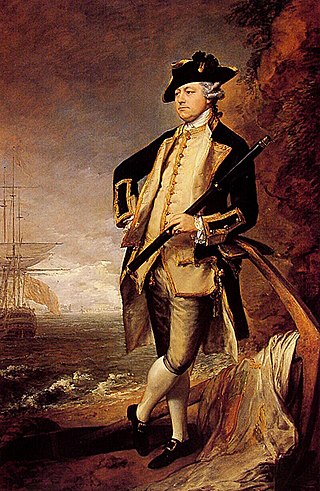
Admiral Augustus John Hervey, 3rd Earl of Bristol, PC was a Royal Navy officer and politician. He commanded the sixth-rate HMS Phoenix at the Battle of Minorca in May 1756 as well as the third-rate HMS Dragon at the Capture of Belle Île in June 1761, the Invasion of Martinique in January 1762 and the Battle of Havana in June 1762 during the Seven Years' War. He went on to be Chief Secretary for Ireland and then First Naval Lord. He was known as the English Casanova, due to his colourful personal life.

Admiral Sir Charles Saunders was a Royal Navy officer. He commanded the fourth-rate HMS Gloucester and led her in action at the Second Battle of Cape Finisterre in October 1747 during the War of the Austrian Succession. After serving as Commander-in-Chief, Mediterranean Fleet, he was appointed Commander-in-Chief, English Channel in charge of the Western Squadron between October 1758 and May 1759). He took command of the fleet tasked with carrying James Wolfe to Quebec in January 1759 and consolidated the dead general's victory after the Battle of the Plains of Abraham in September 1759 by devoting great energy to keeping the British Army, now under the command of Colonel George Townshend, well supplied during the Seven Years' War. He later became Senior Naval Lord and then First Lord of the Admiralty.
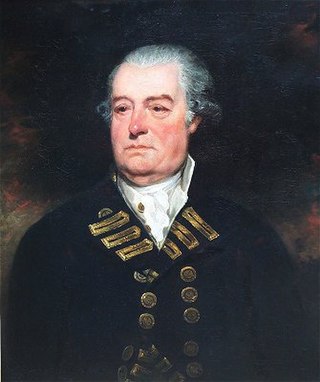
Admiral Mariot Arbuthnot was a British admiral, who commanded the Royal Navy's North American station during the American War for Independence.
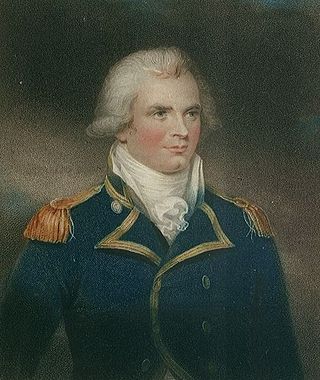
Admiral Sir Henry Trollope, GCB was an officer of the British Royal Navy.

The Commander-in-Chief, The Nore, was an operational commander of the Royal Navy. His subordinate units, establishments, and staff were sometimes informally known as the Nore Station or Nore Command. The Nore is a sandbank at the mouth of the Thames Estuary and River Medway. In due course the Commander-in-Chief became responsible for sub-commands at Chatham, London, Sheerness, Harwich and the Humber.
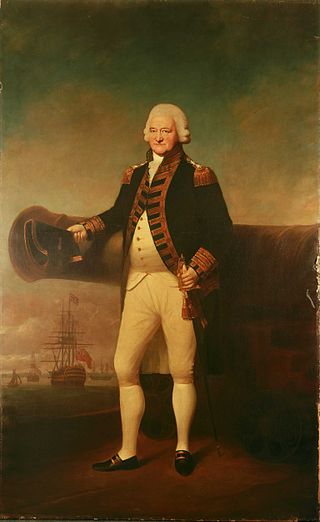
Admiral of the Fleet Sir Peter Parker, 1st Baronet was a Royal Navy officer. As a junior officer, he was deployed with a squadron under Admiral Edward Vernon to the West Indies at the start of the War of Jenkins' Ear. He saw action again at the Battle of Toulon during the War of the Austrian Succession. As captain of the fourth-rate HMS Bristol he took part in the Invasion of Guadeloupe during the Seven Years' War.
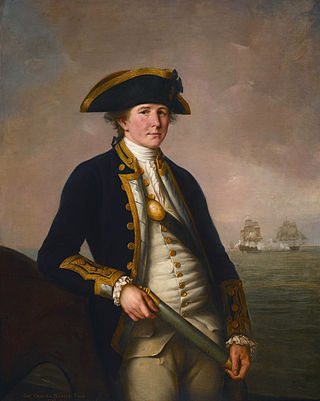
Admiral of the Fleet Sir Charles Morice Pole, 1st Baronet GCB was a Royal Navy officer, colonial administrator and politician. As a junior officer he saw action at the siege of Pondicherry in India during the American Revolutionary War. After taking command of the fifth-rate HMS Success he captured and then destroyed the Spanish frigate Santa Catalina in the Strait of Gibraltar in the action of 16 March 1782 later in that War.

Vice-Admiral Robert Duff was an officer of the Royal Navy during the War of the Austrian Succession, the Seven Years' War and the American War of Independence. He briefly served as colonial governor of Newfoundland.

Vice Admiral Sir George Collier was an officer of the Royal Navy who saw service during the Seven Years' War, the American War of Independence and the French Revolutionary Wars. As commander of the fourth-rate ship HMS Rainbow, he was one of the most successful British naval commanders during the opening stages of war with America. He achieved considerable success as one of the senior officers on the North American coast, conducting and organizing several highly effective raids and counter-strikes. He was superseded however, and returned to Britain to play a role in the closing events of the war in European waters, before moving ashore to start a political career. He enjoyed a brief return to service with the resumption of war with France, and achieved flag rank, but died shortly afterwards.

Admiral Sir Thomas Pasley, 1st Baronet was a senior and highly experienced British Royal Navy officer of the eighteenth century, who served with distinction at numerous actions of the Seven Years' War, American Revolutionary War and French Revolutionary Wars. In his youth he was renowned as an efficient and able frigate officer and in later life became a highly respected squadron commander in the Channel Fleet. It was during the latter service when he was awarded his baronetcy after losing a leg at the Glorious First of June, aged 60.

Admiral of the Fleet Sir James Hawkins-Whitshed, 1st Baronet,, was a Royal Navy officer. He saw action in command of a sloop at the Battle of Martinique during the American Revolutionary War. He went on to serve under Sir John Jervis in the Mediterranean and took part in the battle of Cape St. Vincent during the French Revolutionary Wars.
Admiral Sir Thomas Williams GCB was a senior British Royal Navy officer of the late eighteenth and early nineteenth centuries, who served in numerous theatres during the American Revolutionary War, French Revolutionary Wars and Napoleonic Wars. As a young officer he fought at a number of battles in the Caribbean and as a frigate captain he was knighted for his actions at the action of 8 June 1796 in which two French frigates were captured without a single man killed or wounded on Williams' ship HMS Unicorn. Later in his career, Williams commanded squadrons blockading the European coast and assisting the supply of the British Army during the Peninsula War.

Captain Robert Boyle-Walsingham was an Anglo-Irish Royal Navy officer and politician. He was killed in the Great Hurricane of 1780 while serving as a commodore onboard HMS Thunderer.
Rear-Admiral Christopher Hill was a Royal Navy officer who served as Commander-in-Chief, River Medway and the Nore. Having joined the Royal Navy in 1731, Hill served off Ireland, Portugal, and in the Mediterranean Sea before being promoted to commander in 1746. After several commands he was then promoted to post-captain in 1747. While commanding HMS Dover he captured the French East Indiaman Pondichéry during the Seven Years' War. Hill was on half pay between 1760 and 1769, then being given command of HMS Augusta and serving as Commander-in-Chief, River Medway and the Nore for the following year. His last command was HMS Barfleur towards the end of the year. A well thought of officer, Hill was promoted to rear-admiral in January 1778 but was killed in a fall from his horse six months later.
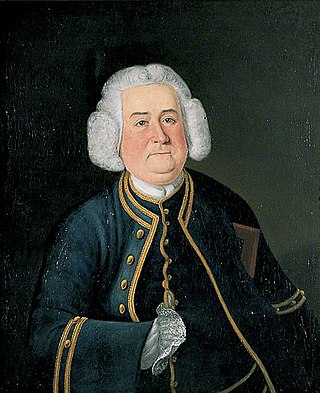
Captain William Boys was a Royal Navy officer who became Commander-in-Chief, The Nore.
Admiral Robert Man (1721–1783) was a Royal Navy officer. He commanded the third-rate HMS Lancaster at the siege of Louisbourg in June 1758 during the French and Indian War. He went on to become commander-in-chief of the Leeward Islands Station, then Commander-in-Chief, Mediterranean Fleet and finally First Naval Lord.
Admiral Philip Patton was a Royal Navy officer.

Admiral Matthew Buckle was a Royal Navy officer who served as Commander-in-Chief, the Downs from 1778 to 1779.
Admiral Sir Archibald Dickson, 1st Baronet (c.1739–1803) was a Royal Navy officer.

Rear Admiral Sir Digby Dent (1739–1817) was a Royal Navy commander.
References
- 1 2 "George Mackenzie (d.1780)". Three Decks. Retrieved 10 January 2023.
- ↑ The Annual Register, Or, A View of the History, Politics, and Literature for the Year 1778. Vol. 21. J. Dodsley. 1779. p. 221.
- ↑ Biographical Memoire of Thomas Mackenzie Esq. Vol. 33. The Naval Chrinicle. 1 January 1815. ISBN 9781108018722.